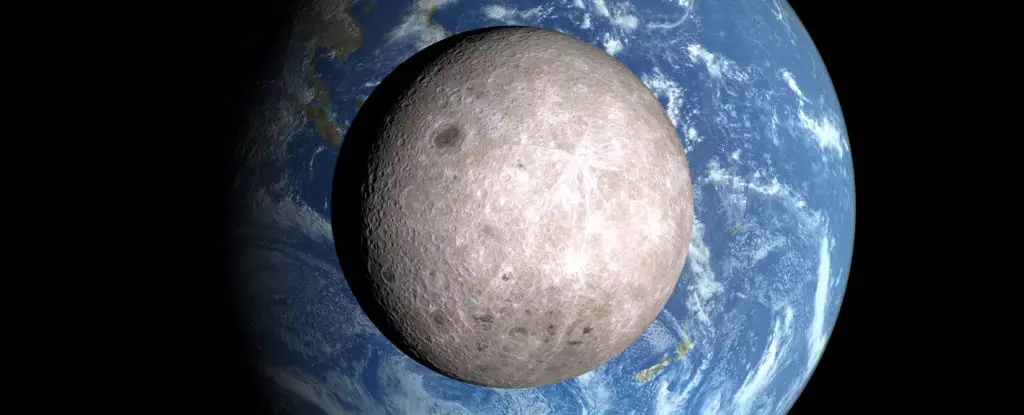The distribution of water across the Moon’s surface reveals an intriguing and uneven pattern that has captivated scientists for years. Recent studies suggest that the far side of the Moon, the hemisphere perpetually turned away from Earth, harbors significantly less water than its near side. This discovery raises profound questions about our understanding of the Moon’s geological history and its formation. The disparity in water abundance challenges the conventional models of lunar development, which historically have not accounted for such asymmetries.
Scientists at the Chinese Academy of Sciences, led by planetary physicists Huicun He and Linxi Li, have embarked on an important analysis of lunar materials collected from the far side. Their findings indicate that the differences in the chemical composition of the Moon’s two hemispheres may result from the giant impact theory, which posits that the Moon originated from debris ejected following a collision between the early Earth and a Mars-sized body known as Theia. This theory suggests that the Moon was once a molten entity, allowing water to migrate and influence its formation.
The Geological Duality of the Moon
The stark contrast between the near and far sides of the Moon is not merely aesthetic; it reflects significant geological processes that shape celestial bodies. The near side features expansive, flat basaltic plains known as maria, which were the result of volcanic activity billions of years ago. In contrast, the far side displays a heavily cratered landscape, indicative of a history marked by violent impacts and less volcanic activity.
One striking hypothesis revolves around the thickness of the lunar crust. The Moon’s near side possesses a thinner crust, allowing molten rock to break through more easily and create the vast maria. It’s suggested that the proximity to the heat generated by the Earth during the Moon’s cooling period may have facilitated this volcanic activity. This uneven heating and cooling could also account for the disparity in water distribution across the lunar surface.
Recent samples from the Chang’e-6 mission, which successfully returned material from the far side, are shedding light on this mysterious situation. By comparing these samples to those from the near side, scientists can begin to piece together the chemical puzzle that is the Moon.
Insights from Lunar Samples: Water Content Analysis
Detailed analysis by researchers, utilizing methods like scanning electron microscopy and electron probe microanalysis, focused on identifying signs of hydration in minerals extracted from the composition of the far side. Notably, the results indicated a strikingly low water content within the basalt samples, which comprised only 1 to 1.5 micrograms of water per gram of rock. These findings fuel the hypothesis that the far side’s geological history is marked by conditions that produced a substantially drier composition compared to its near counterpart.
What’s even more provocative is the possibility that the cataclysmic events that shaped the Moon have hidden layers yet to be explored. The giant South Pole-Aitken Basin, a feature that dominates the far side and represents one of the oldest and largest impact structures in the solar system, serves as a focal point for understanding this evolutionary history. It’s suggested that the tremendous shock from the impact that formed this basin could have redistributed material, leading to a divergence in both composition and water content.
The Role of Water in Lunar Evolution
The newfound understanding of water in the lunar mantle sheds light on the ongoing debate surrounding the Moon’s genesis. Water plays a crucial role in shaping not just the Moon but the bodies in our solar system. Its presence or absence can dictate volcanic activity, influence surface features, and even affect potential resources for future lunar exploration. As humanity sets its sights on returning to the Moon, understanding its water distribution becomes increasingly critical for sustained human presence and exploration.
The debate continues regarding whether the observed dryness of the far side is a universal characteristic or if other regions might hold more water. Each new analysis from lunar samples provides valuable data, propelling the scientific community toward a more nuanced understanding of our natural satellite. Continued exploration and sample collection may reveal not only the Moon’s secrets but also provide insights relevant to other celestial bodies, opening avenues for comparative planetology studies.
In the grand narrative of our solar system, the Moon remains an unwavering testament to the chaos of its beginnings. As we seek to unravel its past, the intricate dance between water, geology, and history continues to shape our comprehension of the cosmos.

